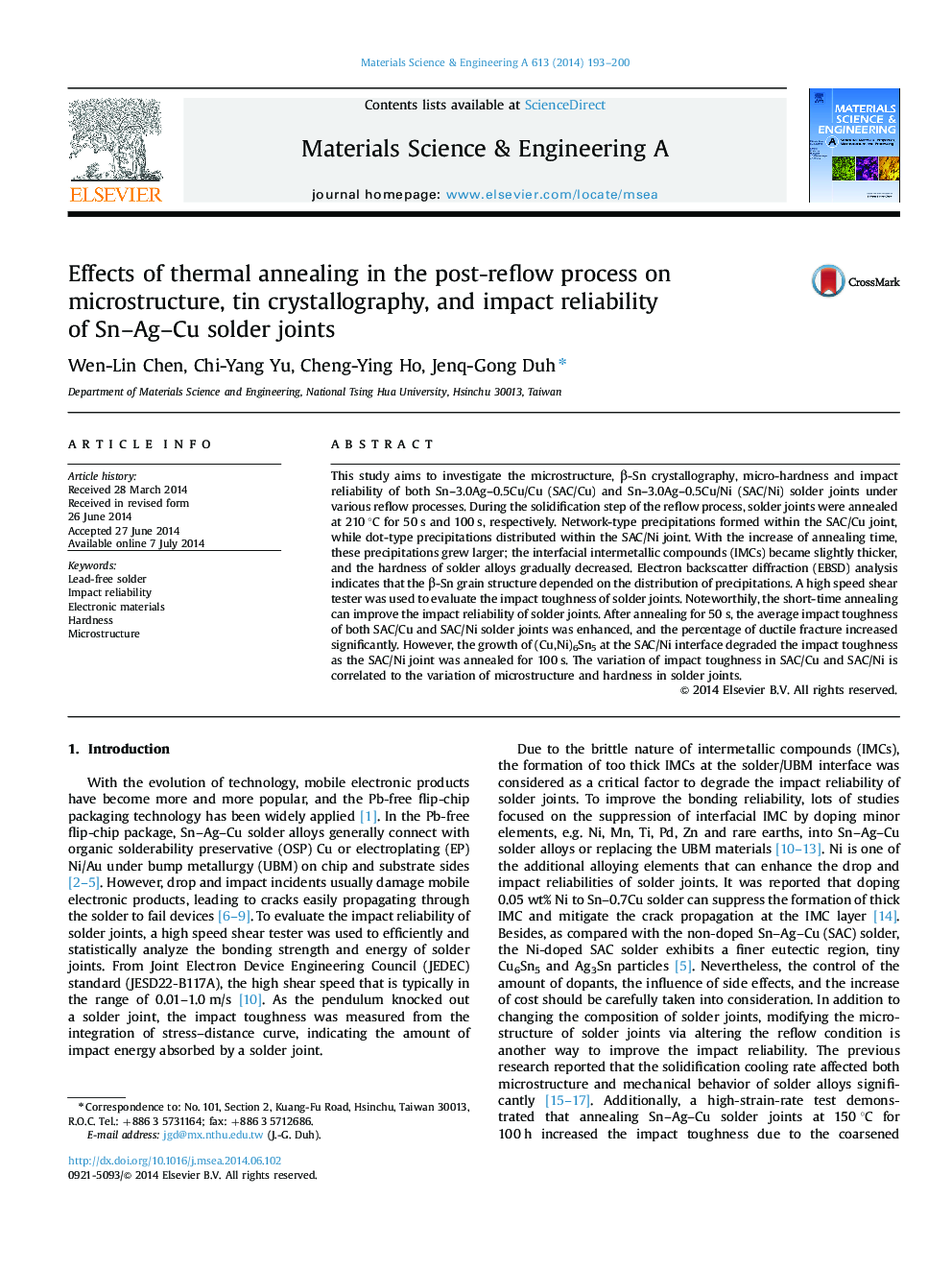| Article ID | Journal | Published Year | Pages | File Type |
|---|---|---|---|---|
| 7980446 | Materials Science and Engineering: A | 2014 | 8 Pages |
Abstract
This study aims to investigate the microstructure, β-Sn crystallography, micro-hardness and impact reliability of both Sn-3.0Ag-0.5Cu/Cu (SAC/Cu) and Sn-3.0Ag-0.5Cu/Ni (SAC/Ni) solder joints under various reflow processes. During the solidification step of the reflow process, solder joints were annealed at 210 °C for 50 s and 100 s, respectively. Network-type precipitations formed within the SAC/Cu joint, while dot-type precipitations distributed within the SAC/Ni joint. With the increase of annealing time, these precipitations grew larger; the interfacial intermetallic compounds (IMCs) became slightly thicker, and the hardness of solder alloys gradually decreased. Electron backscatter diffraction (EBSD) analysis indicates that the β-Sn grain structure depended on the distribution of precipitations. A high speed shear tester was used to evaluate the impact toughness of solder joints. Noteworthily, the short-time annealing can improve the impact reliability of solder joints. After annealing for 50 s, the average impact toughness of both SAC/Cu and SAC/Ni solder joints was enhanced, and the percentage of ductile fracture increased significantly. However, the growth of (Cu,Ni)6Sn5 at the SAC/Ni interface degraded the impact toughness as the SAC/Ni joint was annealed for 100 s. The variation of impact toughness in SAC/Cu and SAC/Ni is correlated to the variation of microstructure and hardness in solder joints.
Related Topics
Physical Sciences and Engineering
Materials Science
Materials Science (General)
Authors
Wen-Lin Chen, Chi-Yang Yu, Cheng-Ying Ho, Jenq-Gong Duh,
